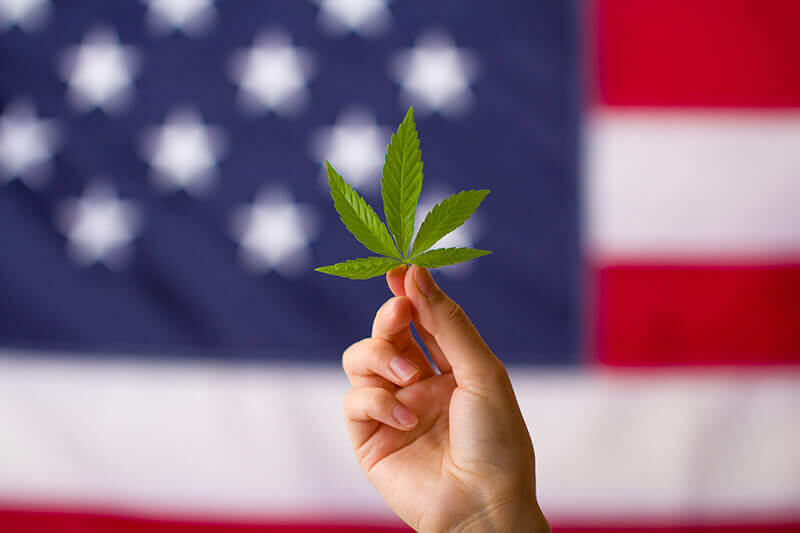Beginner’s 101
What is CBD?

Cannabidiol, cannabinoids, and the endocannabinoid system, these are words often used when talking about what CBD means. But what if you’re new to CBD and have no idea what it is? We’ve got the CBD facts.
Whether you’re brand new or even if you have a friend that wants to know. We’ve put together an essential CBD fact guide to help the newest of users understand what CBD really is.
If there were any CBD facts we thought you needed to know first before you try CBD, we’ve covered them all here. The world of CBD can be confusing, but that’s why we’ve broken down these top 16 facts and answers to your questions in one article. In this guide, we’ll cover it all.
Let’s start with where CBD comes from.
1. CBD comes from cannabis

Most people are aware that CBD comes from cannabis, but what it actually is might not be clear.
The chemical makeup of the plant is formed of cannabinoids, terpenes, flavonoids, and plant waxes. CBD is a type of cannabinoid that is similar to the molecules your own body produces called endocannabinoids.
2. CBD is one of over 100 other cannabis plant cannabinoids
The compounds found in cannabis are plentiful, the most common are cannabidiol (CBD) and Tetrahydrocannabinol (THC). There are over 100 other cannabinoid compounds found in cannabis that all have benefits of their own, which include CBN, CBC, CBG, and many more.
3. What does CBD do?
CBD is one of the non-psychoactive cannabinoids that doesn’t cause a high. Unlike THC, CBD doesn’t have any mind-altering effects. Instead, it has calming and relaxing effects.
4. CBD and THC aren’t the same thing
The main difference between THC and CBD is how they make you feel. CBD doesn’t cause a high and makes you feel calm and relaxed, while THC causes euphoria, increased appetite, drowsiness, and also paranoia if taken in high doses.
While THC and CBD are both cannabinoid compounds, they are different. The way they interact with the body, their chemical structure, and their psychoactivity are just some of the ways they differ.
Need to know more about THC and CBD? Why not read our full THC vs CBD guide, so you can know the difference.
5. Hemp and marijuana are both cannabis sativa
The cannabis plant variety includes 3 different species called Cannabis Indica, Ruderalis, and Sativa. Cannabis sativa is categorized as high THC and low THC plants, for legal reasons this characterization helps to determine which plants cause intoxicating effects.
Hemp describes cannabis sativa with low THC at 0.2% or less and marijuana refers to cannabis sativa with high THC. Both plants are still cannabis sativa only their THC content separates them.
6. Most CBD products are made from hemp

Hemp, due to its low THC content and non-intoxicating effects is deemed legal in most places around the world. Hemp is high in CBD and low in THC which makes it an ideal legal source for extracting CBD. It can be found in both marijuana and hemp, but as hemp is legal in most places it can easily be used as an alternative.
7. CBD in hemp is the same as CBD in marijuana
Some believe that CBD that comes from hemp yields a lower quality CBD than marijuana, the truth is, the compound is the same in both types of plants. CBD product quality depends on the way the plant is grown, stored, and extracted. Poor manufacturing conditions affect the quality of the product and how much CBD it contains. But it doesn’t change the quality of the molecule.
Still, need more on where CBD comes from? Try our post on the origins of CBD.
8. Not all CBD products are the same
Staying on the topic of CBD quality, it’s important to note that not all CBD products are the same. You may see CBD in every corner of your health food stores or beauty counters, but the reality is, the CBD industry still remains unregulated.
As with any new industry, it takes time for rules and regulations to be put in place. This means as consumers it’s important to always back check your CBD products to ensure they’re safe.
Poorly manufactured products can contain mold, heavy metals, solvent residues, pesticides, and fertilizer chemicals. High-quality brands will have their results published on their website. Check to see if your CBD brand is third-party tested, organic, and is extracted without solvents.
9. Hemp oil and CBD oil are sometimes used interchangeably
The term CBD oil can be used to describe any oil that contains the molecule CBD. Most CBD products are made from hemp extracts, which make them hemp oil as well.
Other types of cannabis such as ‘marijuana’ can be used to make CBD oil, but they contain high THC. There are some instances where hemp oil doesn’t contain CBD at all. Which we will describe next.
10. Hemp seed oil and CBD oil aren’t the same things

Hemp can be found in a host of products from skincare to candles. But that’s not to say that all hemp products contain CBD. The hemp plant has a wide range of uses that start from the buds right down to the roots. Each part has beneficial properties, but not all parts are rich in CBD.
Hemp seeds are produced by the flowers of the plant and have little to no CBD or THC content. Hemp seed oil is rich in omegas, antioxidants, and amino acids, and protein. Products labeled as hemp seed oil are made from only the seeds and are used mainly for cooking and skincare.
11. CBD works with the endocannabinoid system
There’s an internal bodily system that acts as a regulator to control your sleep pattern, immune function, pain responses, and mood, called the endocannabinoid system.
The compounds found in cannabis are closely related to compounds your body produces called endocannabinoids, when cannabinoids like CBD are introduced into your system they help to restore balance and promote well-being in your body.
Click here to check out high-quality CBD oil.
12. There’s no set dosage for CBD

When it comes to taking CBD there’s no set way to calculate your dose. Everyone is different and has a unique set of circumstances that can affect that way CBD works. It can depend on your height, weight, age, diet, and overall health.
How CBD works for one person might not be the same for you. So, to find your dose start low and work your way up. This method is called the up-titration method and can help you find a level that suits you. Keep track of your doses so you can understand how CBD works with your body.
Need more info on CBD dosage? Download our CBD dosage tracker to help you find your CBD sweet spot.
Looking to try CBD for yourself? Check out some CBD products here.
13. More cannabinoids are better than one
As we mentioned earlier, CBD is just one of many cannabis compounds. When the scientist who discovered the effects of CBD – Dr. Raphael Mechoulam, discovered the entourage effect in 1998, he also uncovered a phenomenon that meant that when more than one cannabinoid is present they work in synergy with each other to enhance the effects.
This cocktail of cannabinoids is found naturally in the hemp plant. Full-spectrum and broad-spectrum hemp extracts contain a broad profile of cannabinoids, while CBD isolate only contains CBD.
14. Hemp-derived CBD is legal at a federal level in the United States

In 2018 the U.S farm bill was passed by the U.S senate which made hemp and its derivatives legal under federal law. This meant hemp products and CBD that was derived from hemp became legal. Some states in the U.S such as Idaho, Iowa, and South Dakota have banned CBD products even if they are derived from hemp.
Would you like to know more about if CBD is legal? Read our post on CBD legality to find out more.
15. CBD isn’t FDA approved
Food and Drug Administration (FDA) approval is given to food, supplements, and drugs that are deemed safe by their regulations. They add guidelines to approved products for their safe use and recommendations on dosage.
Currently, CBD is classified under the non-approved product list, which means there are no regulations on dosage recommendations or production practices. As CBD is still a new product FDA ruling is still in the process.
16. Is CBD Bad For You?
CBD generally speaking is something used to support well-being. However, it’s important to pay attention to your body and speak with your doctor about using CBD, especially if you have any underlying health conditions. Studies into whether CBD interferes with medication are still ongoing, it is thought that CBD can interfere with an enzyme called CYP3A4, which is similar to an enzyme found in grapefruit.
When this enzyme is blocked it can affect the metabolization of certain prescription medications, which is why drugs carry a warning against the fruit. Always check with a medical professional before you use CBD with medication.
Conclusion
CBD is a compound found in the hemp variety of cannabis, which is the main source of CBD extraction. CBD isn’t psychoactive and helps restore well being and balance in the body.
The CBD industry is still unregulated so product safety is essential. Research and look for third-party testing and always check with a medical professional before you take CBD with medication
Have we covered all the CBD essentials you need to know before you take CBD? Contact our expert customer care team if you have any more questions about how to choose your CBD products or learn more about CBD. We’ll be happy to help you, we’re in the right-hand corner in the chatbox.







